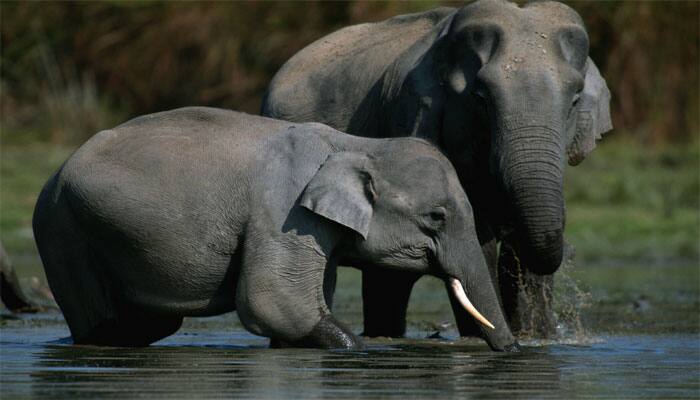Kochi: Expressing concern over the recent spate of poaching of elephants in southern India, a global wildlife monitoring network has said organized inter-state poaching gangs were behind the killings of tuskers in the forests of Western Ghats.
The recent spate of poaching of elephants and seizures of ivory in southern India has brought forth a disturbing trend that after a hiatus of about 20 years, organized inter-state poaching gangs are resurfacing and are active once again in India, as per wildlife trade monitoring network TRAFFIC.
It says while domestic demand is one of the drivers for ivory in India, with certain communities of western India using it for bangles and other ornamental purposes, the lion's share was meant for international consumption mainly to countries like Japan and China via Thailand, Singapore and Philippines.
The leading non-governmental organization working globally on trade in wild animals and plants said usage of elephant articles vary from Japanese hanko, artifacts, wedding bangles, trophies and medicines.
"Poaching for meat and other products like tail hair also pose threats to populations, especially in northeast India," it says.
Noting that the current poaching hotspots are the same as before in the elephant-rich habitat of Western Ghats, spanning the states of Karnataka, Tamil Nadu and Kerala, as well as Orissa and Assam, TRAFFIC says while the Asian elephant was facing many impediments to its survival today including habitat loss and conflict, poaching still remains a threat.
"Over the past few months, as highlighted extensively by the media, 32 people have been arrested in connection with elephant poaching and trade and over 52 kilograms of finished ivory products have been seized, with little way of knowing how much would have already been smuggled out of India, making it very hard to determine the extent of elephant slaughter," it says.
While it's a little early to accurately determine the impact of poaching on wild Indian elephant populations, according to field sources, there is also speculation that the ivory demand has been kept alive by a slow, steady and discreet supply through the tusks of captive elephants.
"Kerala alone has the highest number of captive elephants in India, with the 2014 official captive elephant census pegging the number around 667, out of which over 90 per cent are tuskers. The ivory is generally cut at the tip of the trunk and takes about a year to grow back, making it a very steady source.
"Apart from the cut, which may be evident in raw ivory seizures, there is no way of distinguishing wild sourced ivory as opposed to captive sourced, in case of finished products," it says.
The Asian elephant has been accorded the highest possible protection under the law through its listing under Schedule I of the Wildlife (Protection) Act, 1972 of India.
















